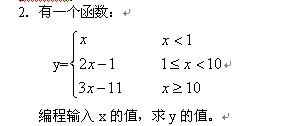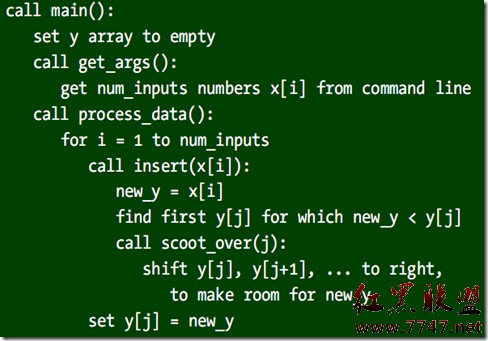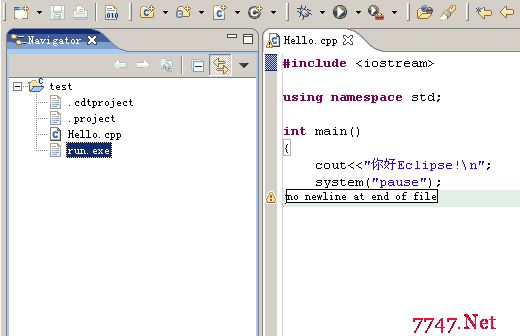AOV网络及拓扑排序
[cpp]/* AOV网络及拓扑排序
1、在有向无环图中,用顶点表示活动,用有向边<u,v>表示活动u必须先与活动v,这种有向图叫AOV网络。
2、若<u,v>,则u是v的直接前驱,v是u的直接后继;若<u,u1,u2,···un,v>则称u是v的前驱,v是u的后继。 www.zzzyk.com
3、前驱后继关系有传递性和反自反性。则可以推断AOV网络必须是有向无环图。
4、拓扑排序实现方法:
1)从AOV网络中选择一个入度为0的顶点并输出;
2)从AOV网络中删除该顶点以及该顶点发出的所有边;
3)重复1)和2),直到找不到入度为0的顶点;
4)如果所有顶点都输出了则拓扑排序完成,否则说明此图是有环图。
输入描述:首先是顶点个数n和边数m;然后m行是每条有向边的起始点u,v;
顶点序号从1开始,输入文件最后一行为0 0 表示结束。
输入样例: 样例输出:
6 8 5 1 4 3 2 6
1 2 Network has a cycle!
1 4
2 6
3 2
3 6
5 1
5 2
5 6
6 8
1 3
1 2
2 5
3 4
4 2
4 6
5 4
5 6
0 0
*/
#include<stdio.h>
#include<string.h>
#define MAXN 10
struct Arcnode
{
int to;
struct Arcnode *next;
};
Arcnode* List[MAXN];
int n,m,count[MAXN];
char output[100];
void topsort()
{
int i,top=-1;
Arcnode* temp;
bool bcycle=false;
int pos=0;
for(i=0; i<n; i++)
if(count[i]==0)
{
count[i]=top;
top=i;
}
for(i=0; i<n; i++)
{
if(top==-1)
{
bcycle=true;
break;
}
else
{
int j=top;
top=count[top];
pos+=sprintf(output+pos,"%d ",j+1);
temp=List[j];
while(temp!=NULL)
{
int k=temp->to;
if(--count[k]==0)
{
count[k]=top;
top=k;
}
temp=temp->next;
}
}
}
if(bcycle)
printf("Network has a cycle!\n");
else
{
int len=strlen(output);
output[len-1]=0;
printf("%s\n",output);
}
}
int main()
{
int i,v,u;
//freopen("input.txt","r",stdin);
while(scanf("%d%d",&n,&m)!=EOF)
{ www.zzzyk.com
if(n==0 && m==0)
break;
memset(List,0,sizeof(List));
memset(count,0,sizeof(count));
memset(output,0,sizeof(output));
Arcnode* temp;
for(i=0;i<m;i++)
{
scanf("%d%d",&u,&v);
u--; v--;
count[v]++;
temp=new Arcnode;
temp->to=v; temp->next=NULL;
if(List[u]==NULL)
List[u]=temp;
else
{
temp->next=List[u];
List[u]=temp;
}
}
topsort();
for(i=0;i<n;i++)
{
temp=List[i];
while(temp!=NULL)
{
List[i]=temp->next;
delete temp;
temp=List[i];
}
}
}
return 0;
}
补充:软件开发 , C++ ,




